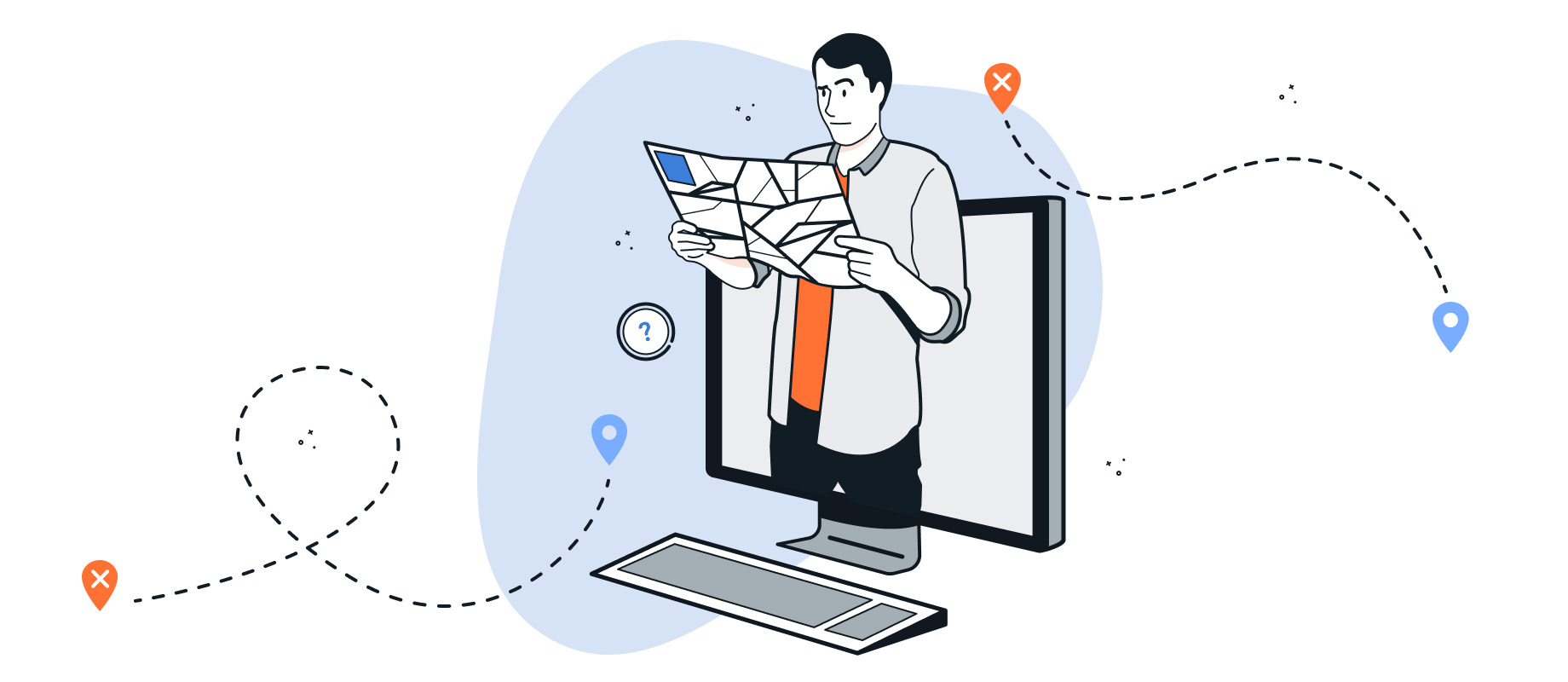
Companies pursue different strategies to retain their customers. The most important thing is to know the needs of the customers. Whether B2B or B2C - all customers have needs. How can these needs be identified and how can an effective strategy for long-term customer retention be developed from them? The answer is: journey mapping. But what exactly is journey mapping?
What are journey maps?
Journey maps are valuable tools for visually representing the "journeys" of specific target groups. In a business sense, it is a holistic view of a target group's interaction with a product or service.
The so-called touchpoints are important here: points of contact between the company and the target group. Each touchpoint has enormous potential to have a lasting impact on the customer relationship. Journey maps help identify these touchpoints and to get an overview of the entire customer or user experience. The perspective of the target group – defined as a persona in journey mapping – is considered. Positive and negative experiences are recognised and can thus be effectively expanded or remedied. The aim is to improve the customer experience (CX) or user experience (UX) and thus to bind customers to the company in the long term.
Types of journey maps
In general, two types of journey maps can be distinguished: customer journeys and user journeys. Customer journeys deal with the entire customer journey and start with the very first encounter with the company. User journeys show the journey of users and their interaction with an application and have their starting point at the first contact with the application. Both follow the same basic structure.
Typical structure
On the horizontal axis, the phases through which the persona passes are entered in chronological order. Vertically, there are categories such as goals, actions, touchpoints and emotions for a differentiated evaluation of the respective phase.
How to create a journey map
When creating your own journey map, there is no one method. The procedure as well as the persona, phases and categories depend on the respective company, the resulting customers and the desired result. Help can be found in the specialist literature and on the internet. Three basic approaches can be distinguished for the creation of a journey map:
- Workshops with knowledge bearers on customer needs
- Statistical surveys (quantitative)
- Interviews with the target group (qualitative)
Our best practice
At IT Sonix, we have found that the target group interview method is best suited for our purposes. In the following, we would like to give a brief overview of our best practice for creating a journey map according to the interview method. In principle, this method can be divided into three successive steps:
- Developing a structure
- Conducting the interviews
- Condensing the results
Developing a structure
First, all documents must be reviewed and, if necessary, interviews with the stakeholders have to be conducted. Then the persona and the phases and categories are defined. Using this, an interview guideline is created and then the target group is invited to the interview based on the persona.
Conducting the interviews
In the second step, the interviews are conducted. Depending on the population and reasonable effort, ten to twenty interviews lasting about one hour are recommended. The selection of persons should be representative and random. A timeline is filled out together and observers document the interviews in written form. In this step, the decisive advantages of the interview method become apparent. It not only provides insights into the actual mindset of the customers, but also makes it possible to deliver reliable results with a small number of participants. Furthermore, interviews offer the opportunity to enter into dialogue with the interviewees and thus contribute to a deeper understanding of the persona.
Condensing the results
In the final step, the results should be condensed. The phases and categories of the map are reviewed and the interview results are evaluated. Finally, the contents are determined and the map is graphically prepared.
Journey mapping helps to understand the wishes of customers in a way that was previously unknown and has a positive effect on increasing sales as well as customer loyalty.